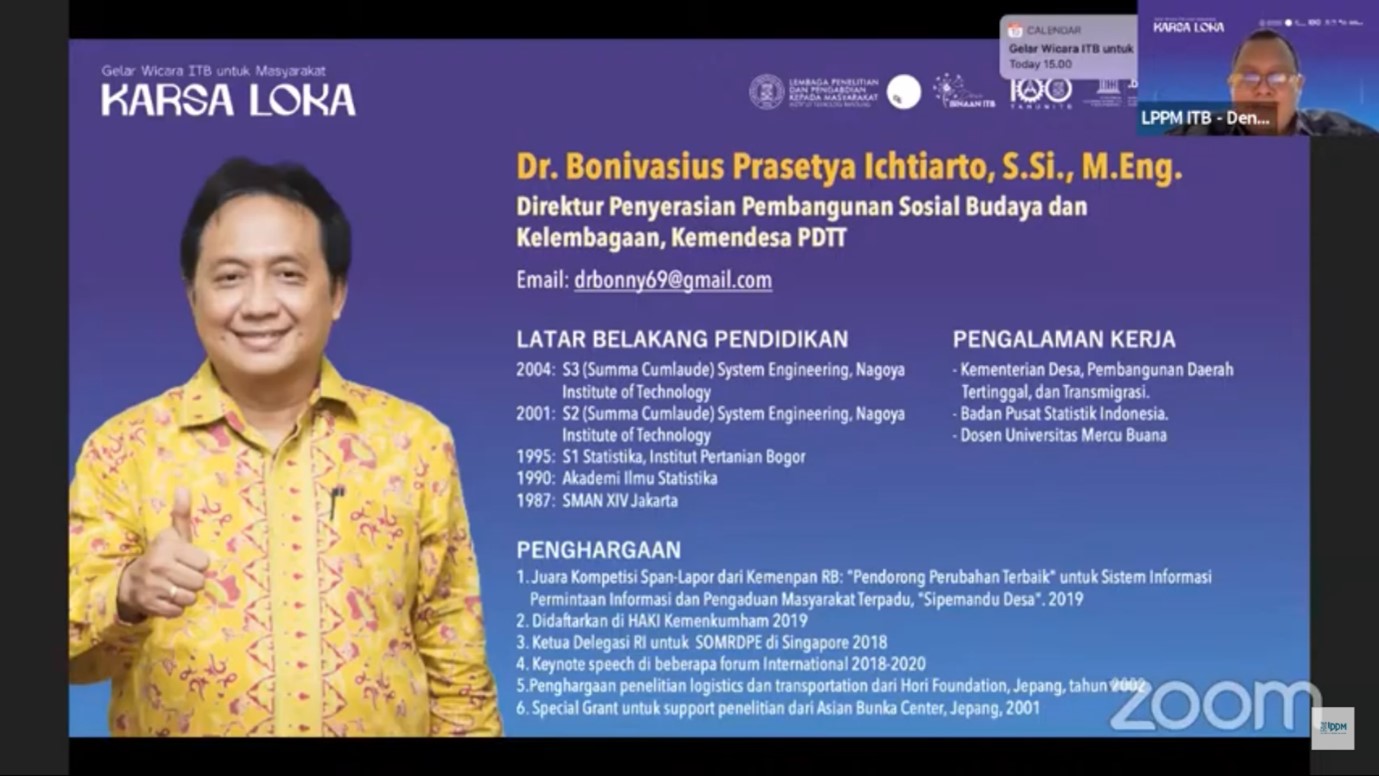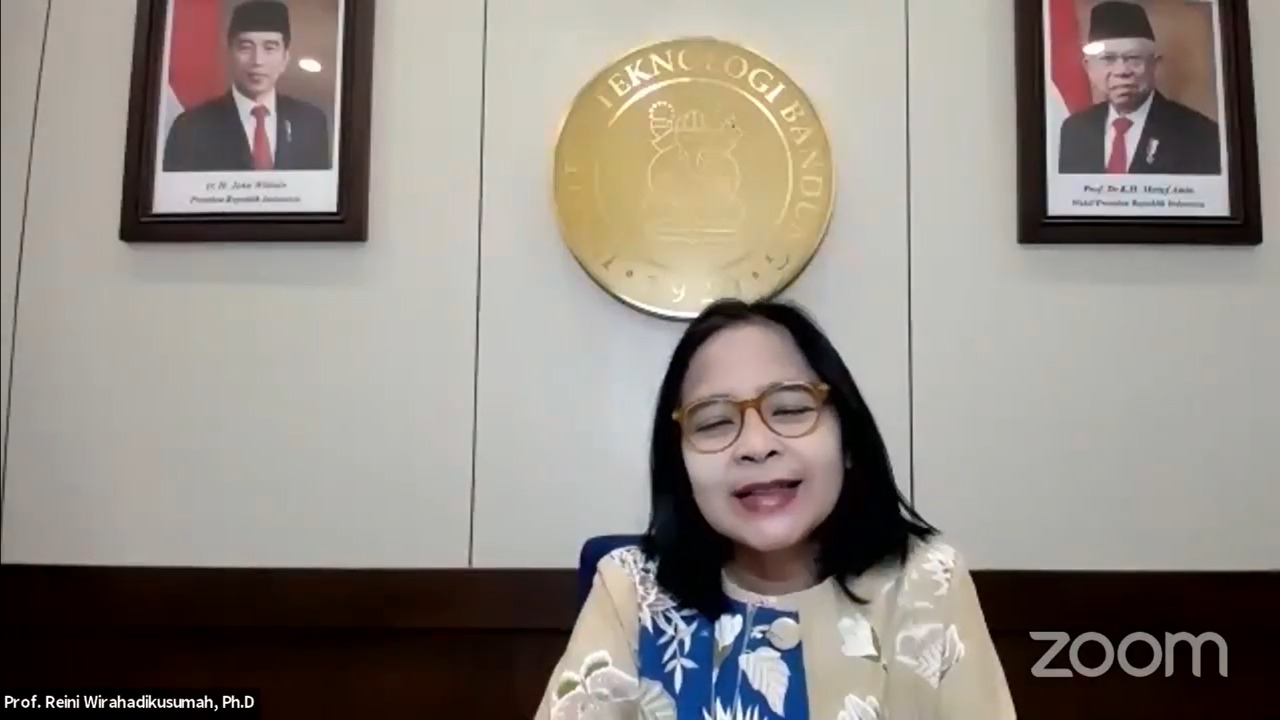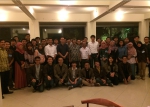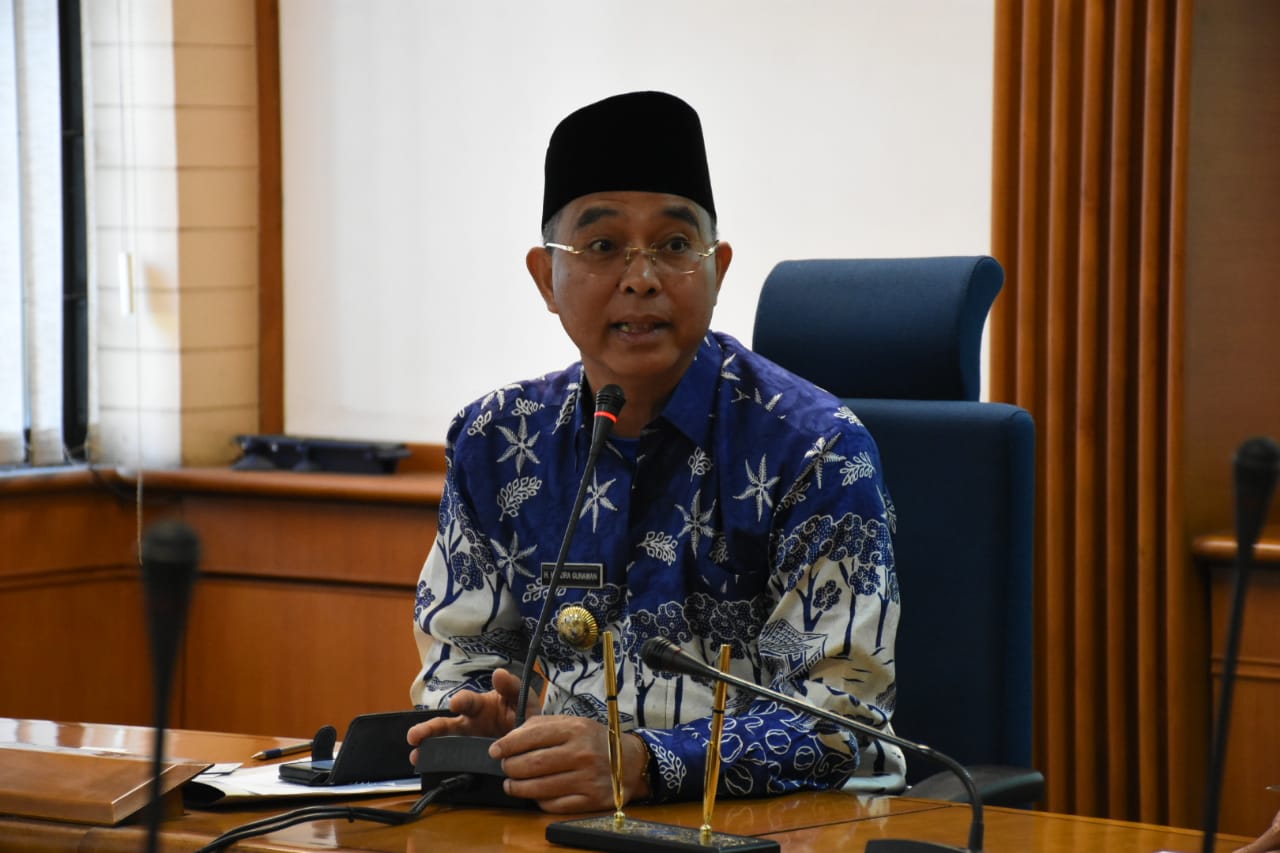Wicara Karsa Loka: Sustainable Collaborative Village Development
By Adi Permana
Editor Adi Permana

BANDUNG, itb.ac.id - Rural area have a supporting role in Indonesia's future. Urban society's stereotypes towards the village may be mainly in the form of hick, slum, distant, and ancient. But without villages, cities will not survive their daily life. In Indonesia, 91 percent are rural, and villages support the food sector for urban areas in Indonesia.
The Institute for Research and Community Service, Institut Teknologi Bandung (LPPM ITB), held the fifth Karsa Loka webinar on Friday (19/3/2021). This webinar was entitled "Sustainable Collaborative Village Development". This webinar invited the Director of Harmonization for Socio-Cultural and Institutional Development, Ministry of Health, Ministry of Village, Development of Disadvantaged Regions, and Transmigration (Kemendesa PDTT), Dr. Bonivasius Prasetya Ichtiarto, S.Si., M.Eng.
Dr. Bonivasius opened the event with an explanation about Village SDGs (Sustainable Development Goals). "Village SDGs are modified the UN's SDGs by adding points to dynamic village institutions and adaptive village culture," said Bonivasius.
Slightly different from the global SDGs, which have 17 objectives, the Village SDGs have 18 objectives. One different goal is dynamic village institutions and adaptive village culture. The other 17 objectives share the same core content as the global SDGs but with contexts adapted to village development.
Furthermore, Bonivasius explained economic development and its indicators. "For example, the indicator for development is Gross Domestic Product (GDP). An indicator that shows the existence of economic growth in a country. The success of a country can sometimes be seen from its GDP," he said.
Bonivasius also explained various issues related to rural development in Indonesia. Some of the problems that exist include sectoral egos, misaligned programs, desire to run independently, etc. For village development, there are particular indicators, namely the village development index and the index of underdeveloped areas.
This village development program also received a direct command from President Jokowi. On October 20, 2019, President Jokowi stated that village funds should reach all village residents, especially the lowest class community, and focus on village development.
In this sustainable village development plan, Kemendesa PDTT will actualize several innovations. Starting from rural supply chains, inclusive villages, green economic development, stakeholder relationship management, development of integrated village information systems, and digital CPFR development, which stands for Collaborative, Planning, Forecasting, and Replenishment. The CPFR functions as a village information system, a village development strategy for joint action plans, a collaborative replenishment program, and a monitoring and evaluation system based on the village SDGs.
More specifically, Bonivasius explained that the village information system had many uses and functions. The village information system functions to implement the one village – one map – one data policy, integrated asset-based village development, digitization of village development, and android-based village data collection.
This sustainable village development program is also supported by various large institutions such as ministries, television stations, universities such as ITB, UGM, world organizations, and various foreign governments such as Australia and China.
Reporter: Yoel Enrico Meiliano (TPB FTI, 2020)
Translator: Billy Akbar Prabowo (Metallurgical Engineering 2020)

.jpg)
.png)
.jpg)
.jpg)
.jpg)



